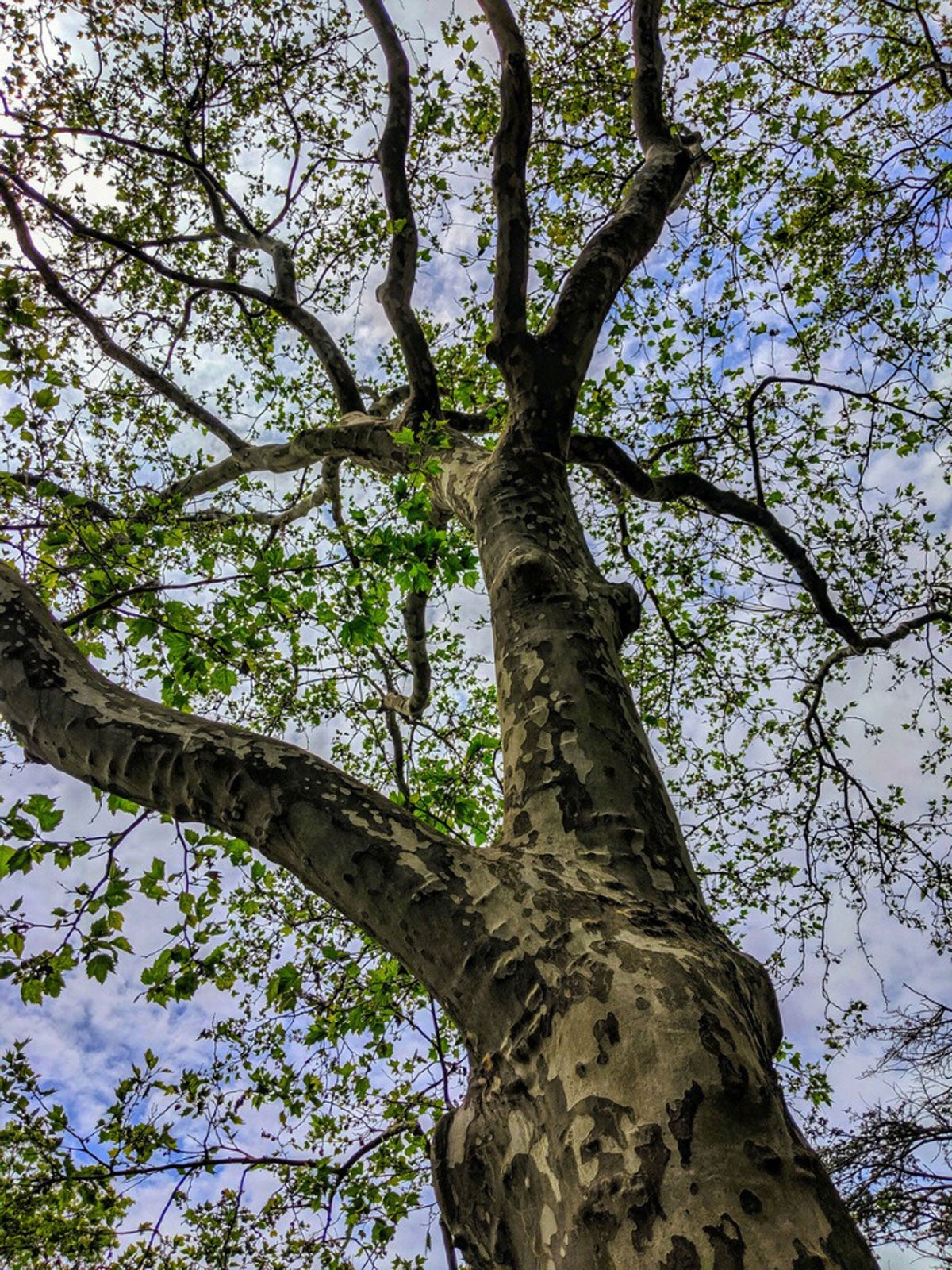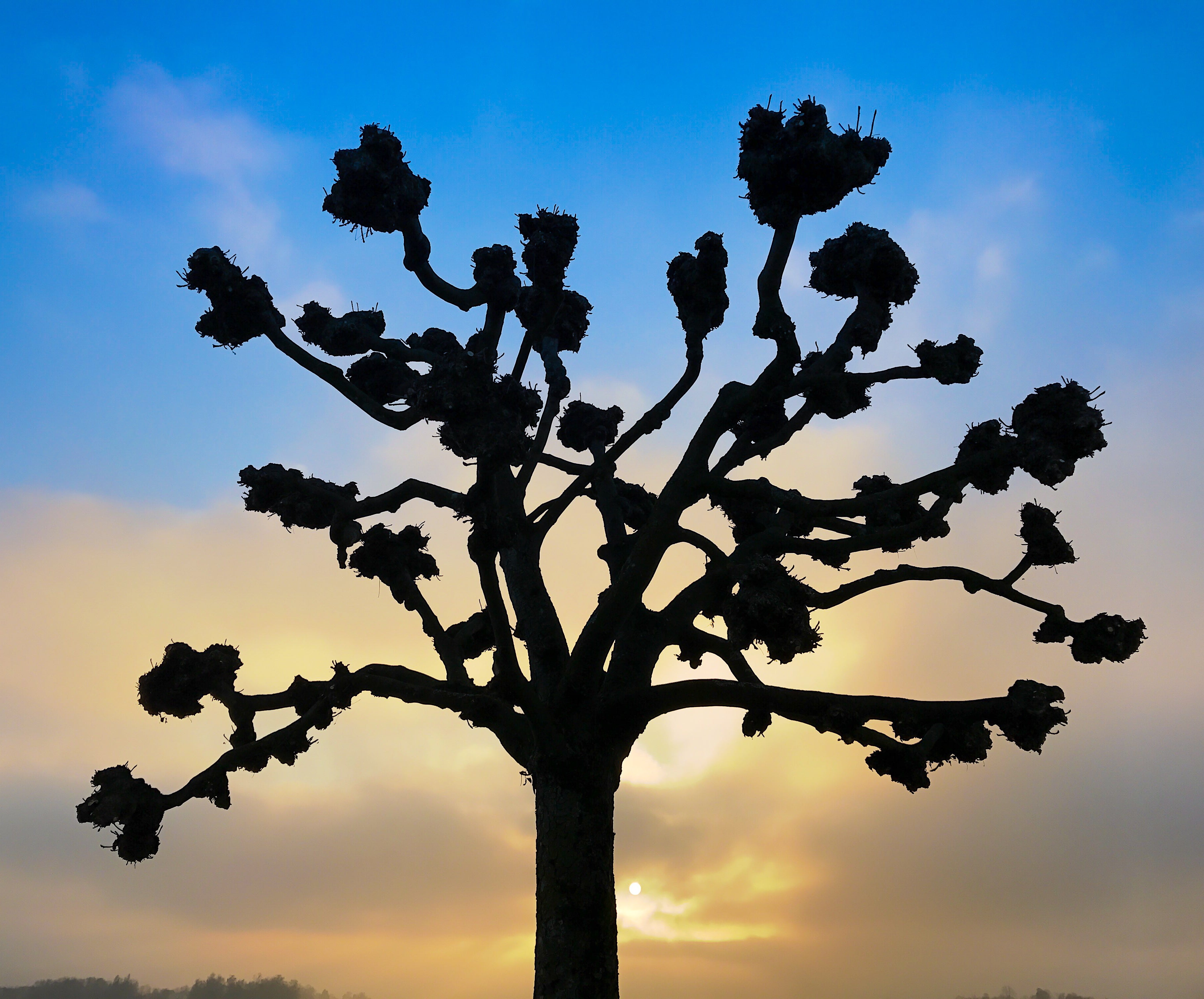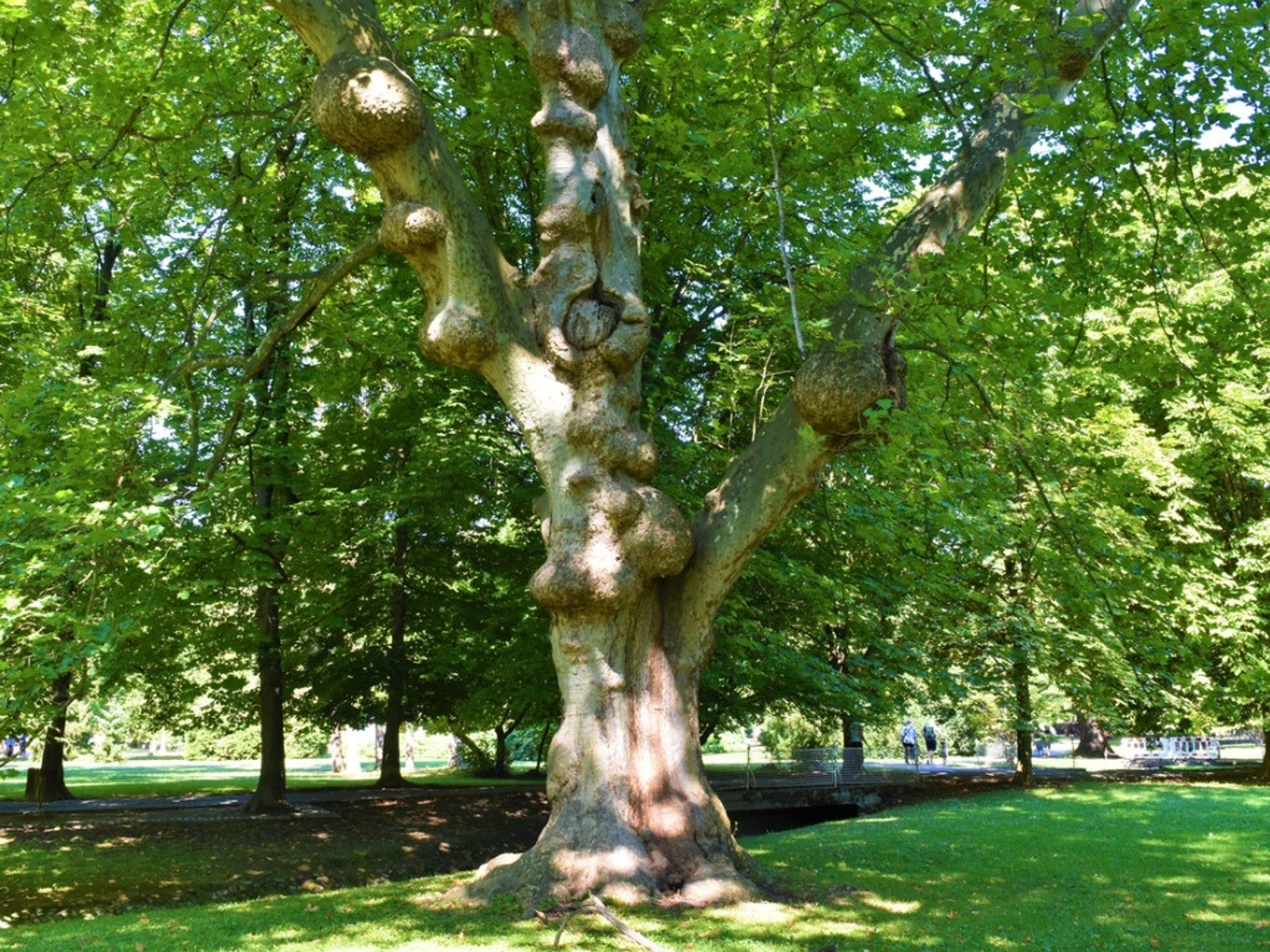Sycamore Tree Care: How To Grow A Sycamore Tree


Sycamore trees (Platanus occidentalis) make handsome shade trees for large landscapes. The most striking feature of the tree is the bark that has a camouflage pattern comprised of gray-brown outer bark that peels off in patches to reveal the light gray or white wood beneath. Older trees often have solid, light gray trunks. Sycamores also go by the names buttonwood or buttonball trees. This comes from the 1 inch (2.5 cm.) balls that hang from the tree all winter and fall to the ground in spring. Each ball hangs on its own stringy 3 to 6 inch (8-15 cm.) twig.
Facts about the Sycamore Tree
The largest deciduous tree in the eastern United States, sycamore trees can grow 75 to 100 feet (23-30 m.) tall with a similar spread, and even taller under ideal conditions. The trunk may be as much as 10 feet (3 m.) in diameter. Sycamores have strong wood with several uses, but as the tree ages, a fungus attacks and consumes the heartwood. The fungus doesn't kill the tree, but it makes it weak and hollow. Wildlife benefit from hollow sycamore trees, using them as storage chambers for nuts, nesting sites, and shelter. The enormous size of sycamore trees makes it impractical for the average home landscape, but they make great shade trees in parks, along stream banks, and in other open areas. They were once used as street trees, but they create a lot of litter and the invasive roots damage sidewalks. You may still see them along streets in older suburban neighborhoods, however. Read on to find out how to grow a sycamore tree.
Growing Sycamore Trees
Sycamore trees grow in almost any soil, but they prefer deep, rich soil that is moist but well-drained. While you can plant container-grown trees any time of year, trees with balled and burlapped roots should be planted in spring or fall. Sycamore tree care is easy. Fertilize the tree every other year if it isn't growing as fast as it should or if the leaves are pale. Water young trees deeply to keep the soil from drying out. After the first couple years, the tree withstands moderate drought. It's best to give the soil a deep soaking when you've gone a month or so without a drenching rain.
Problems with Sycamore Trees
Many problems are associated with sycamore trees. They're fairly messy, shedding a generous supply of leaves, seed balls, twigs, and strips of bark. Tiny hairs on the seed balls irritate skin, and can cause respiratory distress if inhaled by sensitive people. Wear a mask or respirator and gloves when removing the seeds from a seed ball. The leaves and leaf stems also have a coating of hair when they are new. The hairs shed in spring and can irritate eyes, respiratory tract, and skin. A sycamore's spreading roots often infiltrate water and sewer lines and damage sidewalks and paved areas. The trees are susceptible to several insect infestations and fungal diseases. These conditions rarely kill the tree, but often leave it looking bedraggled by the end of the season.
Gardening tips, videos, info and more delivered right to your inbox!
Sign up for the Gardening Know How newsletter today and receive a free copy of our e-book "How to Grow Delicious Tomatoes".

Jackie Carroll has written over 500 articles for Gardening Know How on a wide range of topics.
-
 How To Make A Bouquet Garni Or Herb Bundle For Cooking
How To Make A Bouquet Garni Or Herb Bundle For CookingIf you’re a great cook, you may have made an herb bundle before. If this is a new idea, learn how to add sparkle and interest to your dish with a bouquet garni.
By Amy Grant
-
 ‘Coral Charm’ Peony Care For Sublime Semi-Double Peonies With Lush Salmon Pink Flowers
‘Coral Charm’ Peony Care For Sublime Semi-Double Peonies With Lush Salmon Pink FlowersPeonies are known for their soft baby pink or magenta tones, but if plushy coral blooms are your thing, here’s our guide to the ultimate ‘Coral Charm’ peony care
By Tonya Barnett
-
 Difference Between Sycamore And London Plane Tree
Difference Between Sycamore And London Plane TreeThe London plane tree and American sycamore are difficult to tell apart. Click to learn about their differences.
By Teo Spengler
-
 Sycamore Tree Pruning – When To Prune Sycamore Trees
Sycamore Tree Pruning – When To Prune Sycamore TreesHaving a sycamore tree in your yard can be a great joy. These majestic trees can grow quite large, up to 90 feet (27 meters) tall and nearly as wide, making pruning sycamore trees necessary for optimal health and shape. Learn more in this article.
By Mary Ellen Ellis
-
 Sycamore Tree Problems – Treating Sycamore Tree Diseases And Pests
Sycamore Tree Problems – Treating Sycamore Tree Diseases And PestsTall, fast growing and durable, the sycamore tree is an elegant addition to your backyard landscape. However, it is possible to have problems with sycamore trees, ranging from sycamore tree pests to sycamore tree diseases. Click here for more information.
By Teo Spengler